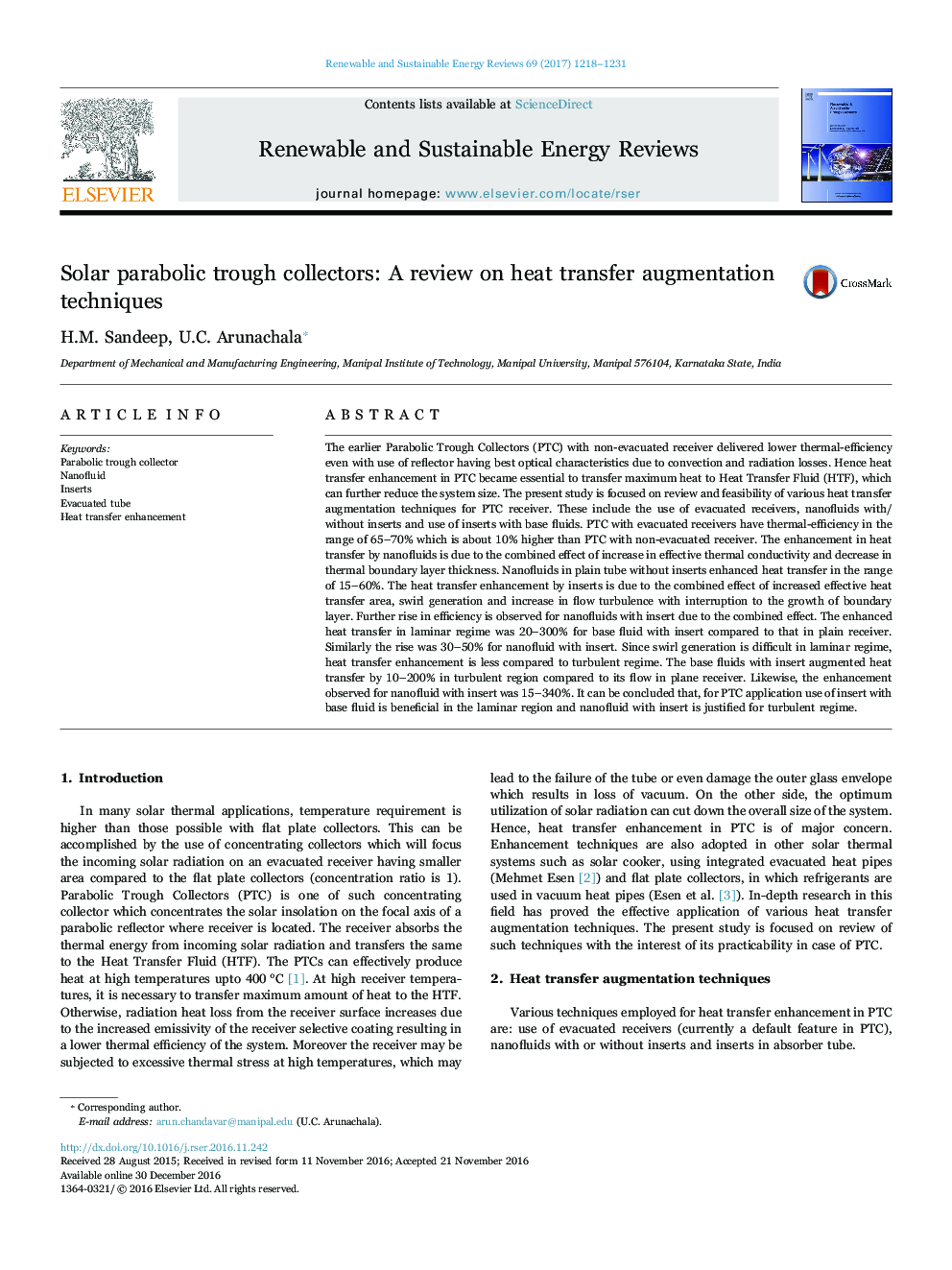| Article ID | Journal | Published Year | Pages | File Type |
|---|---|---|---|---|
| 5483401 | Renewable and Sustainable Energy Reviews | 2017 | 14 Pages |
The earlier Parabolic Trough Collectors (PTC) with non-evacuated receiver delivered lower thermal-efficiency even with use of reflector having best optical characteristics due to convection and radiation losses. Hence heat transfer enhancement in PTC became essential to transfer maximum heat to Heat Transfer Fluid (HTF), which can further reduce the system size. The present study is focused on review and feasibility of various heat transfer augmentation techniques for PTC receiver. These include the use of evacuated receivers, nanofluids with/without inserts and use of inserts with base fluids. PTC with evacuated receivers have thermal-efficiency in the range of 65-70% which is about 10% higher than PTC with non-evacuated receiver. The enhancement in heat transfer by nanofluids is due to the combined effect of increase in effective thermal conductivity and decrease in thermal boundary layer thickness. Nanofluids in plain tube without inserts enhanced heat transfer in the range of 15-60%. The heat transfer enhancement by inserts is due to the combined effect of increased effective heat transfer area, swirl generation and increase in flow turbulence with interruption to the growth of boundary layer. Further rise in efficiency is observed for nanofluids with insert due to the combined effect. The enhanced heat transfer in laminar regime was 20-300% for base fluid with insert compared to that in plain receiver. Similarly the rise was 30-50% for nanofluid with insert. Since swirl generation is difficult in laminar regime, heat transfer enhancement is less compared to turbulent regime. The base fluids with insert augmented heat transfer by 10-200% in turbulent region compared to its flow in plane receiver. Likewise, the enhancement observed for nanofluid with insert was 15-340%. It can be concluded that, for PTC application use of insert with base fluid is beneficial in the laminar region and nanofluid with insert is justified for turbulent regime.
